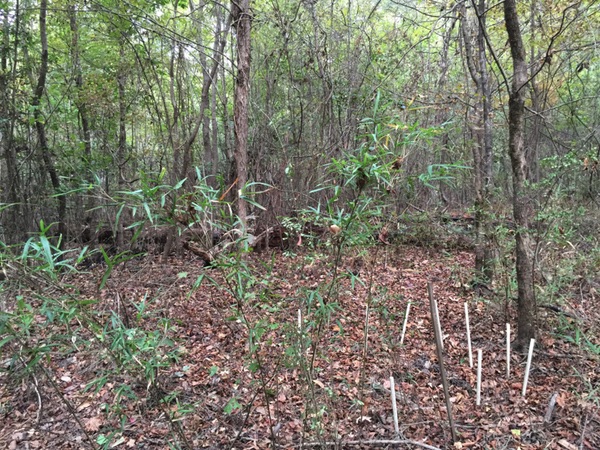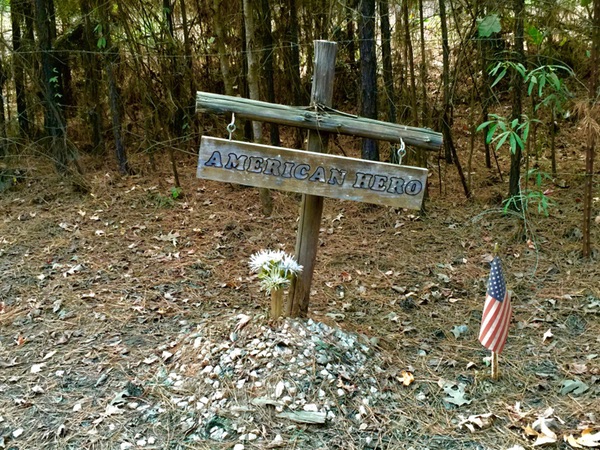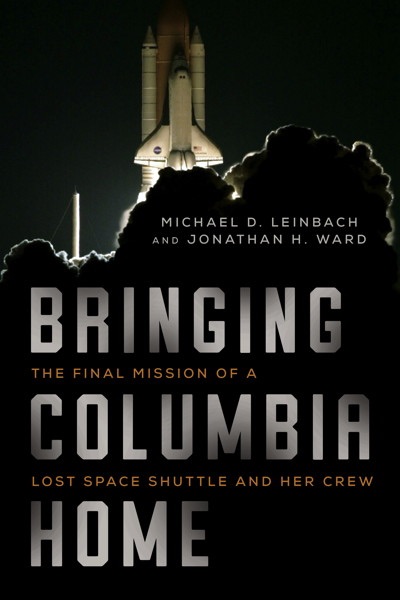A bittersweet homecoming (part 2)An interview with Jonathan Ward, co-author of Bringing Columbia Home: The Untold Story of a Lost Space Shuttle and Her Crewby Emily Carney
|
| Many of the people at KSC spent their entire careers working on Columbia when she was between missions. How could you work on the same ship for more than 20 years and not become emotionally attached to her and all that she represented? |
One of the engineers I interviewed said it very succinctly: Trying to tell the story of Columbia’s crew without talking about the shuttle itself is like trying to imagine Star Trek without mentioning the Enterprise. The astronauts speak of the orbiters as more than machines. As “Crip” said in the foreword to our book, Columbia tried her hardest to bring the STS-107 crew home, just as she had 27 times before, but her wound was too great.
Many of the people at KSC spent their entire careers working on Columbia when she was between missions. How could you work on the same ship for more than 20 years and not become emotionally attached to her and all that she represented? These people knew every twist of wiring, every bolt, every pipe, every square of tile. Each person in the chain knew that the astronauts’ lives—real people’s lives—depended on them doing their job to perfection. So there was pride, love, and personal investment in their work. The KSC people who were assisting with the recovery in the field and putting Columbia back together in the reconstruction hangar knew that vehicle in their bones, and they felt every wound she suffered in their guts.
With this in mind, one of the things I admire most about Mike [Leinbach] was how he and his leadership team took care of the workers in the hangar. They looked for opportunities to boost morale whenever possible, whether it was a shared viewing of KSC’s video “Sixteen Minutes from Home” or tailgating at a Florida Manatees game. NASA’s Spaceflight Awareness program did the same kind of thing out in the field. Astronauts visited the four base camps for searchers almost every night to personally thank people for their efforts in support of the space program.
The shock gradually passed, and workers began to be driven by the intellectual need to find the cause of Columbia’s demise and the emotional need to bring meaning to the crew’s sacrifice. As a student of organizational culture and personal motivation, I am blown away by what these people were able to accomplish individually and collectively.
 Stakes mark a shallow depression still remaining from where Columbia’s “nose cone” crashed through the trees and impacted the ground outside Hemphill. Belinda Gay and Marsha Cooper have been actively advocating to turn this site into a memorial park. (credit: Jonathan Ward) |
Now to the recovery efforts: you and Leinbach not only discuss the participation of high-profile officials (such as astronaut Jerry Ross) in finding as much of the vehicle as possible, but you both also pay tribute to a great many members of the Texas communities who not only endured a hypersonic disintegration (undoubtedly a terrifying experience), but also turned “tragedy into triumph” as they aided the recovery effort, sometimes simply by feeding those who had been out searching for debris and remains. How do you think this community effort differs (or has similarities) to other recovery efforts, such as those undertaken after the Challenger breakup or the Apollo 1 fire?
Ward: Apollo 1’s accident was confined to the launch pad, and Challenger’s recovery was handled entirely by professional dive and salvage teams. Both accidents happened within eyesight of NASA at the launch site. There was no need to involve the public in either effort.
| People were sleeping in their cars because they hadn’t bothered to check on lodging before they left home to join the search. So local citizens opened their homes to the people who had come to town to look for Columbia’s crew. |
Columbia, on the other hand, came down in a remote but nonetheless populated area on a Saturday morning when kids were out playing and parents were having breakfast. No one from NASA even knew about the accident until several minutes after the debris had already begun hitting the ground. Despite almost immediate mobilization from NASA and FEMA [Federal Emergency Management Agency], it still took three or four hours for astronauts to arrive on the scene from Houston, and it was not until the morning of the following day that the debris recovery team from KSC made it to the debris field. It was therefore up to the local police and emergency responders to try to get a handle on the situation until they received more definitive instructions. And they did an amazing job.
Knowledge of the backwoods was essential for getting to remote areas where the crew might be located, in some cases more than a mile from the nearest dirt road. Only the local citizens had that kind of on-the-ground experience. The small towns had very limited infrastructure to handle the massive influx of thousands of searchers who arrived on the scene in the first several days after the accident. People were sleeping in their cars because they hadn’t bothered to check on lodging before they left home to join the search. So local citizens opened their homes to the people who had come to town to look for Columbia’s crew. In Hemphill, Texas—a town of only 1,000 souls—the wife of the local VFW commander organized a massive volunteer feeding effort, ultimately providing somewhere between 30,000 and 60,000 meals for searchers over a two-week period, at no cost to the taxpayer. It’s an amazing story of the goodness of American people in a tragic situation.
Also, how did preservation efforts differ from those undertaken following Challenger and Apollo 1? Why was it important to hold on to as much of the debris as possible, versus burying the remains somewhere in Cape Canaveral, or not preserving the vehicle in earnest?
Ward: Apollo 1’s accident happened in a Block I spacecraft, an early model that was kind of a design dead-end, never intended to fly to the Moon. Rather than try to fix the Block I command module, NASA put its efforts into effecting improvements to the Block II series of spacecraft. There were lessons learned that were carried forward, but the Block I design never flew again.
Challenger was destroyed when its airframe failed due to aerodynamic stresses. There was nothing about the orbiter itself that contributed to the accident. Instead, it had broken up in the supersonic airstream when the structural integrity of the external tank was lost and the orbiter was suddenly no longer pointed into the direction of flight. Many people do not know this, but most of Challenger still rests on the ocean floor. Only a little more than 30 percent of the vehicle was recovered, because of the expense and danger involved. NASA recovered the crew compartment and a couple other key pieces of the orbiter, but the investigation focused on the faulty solid rocket booster and the damage it did to the external tank. At the time, NASA felt there was little to be learned from studying Challenger herself, so what was recovered of her was placed in a silo after the investigation ended.
The debris from Columbia, on the other hand, represents ten times the amount of material recovered from all other uncontrolled hypersonic reentries combined. The effects of plasma, heat, wind, and torsional stress on different types of materials are shown throughout the remnants of the vehicle. Mike lobbied to keep Columbia’s material preserved as a living laboratory for research in spacecraft design. Researchers can petition for loan of Columbia material for study. Mike states with pride that, to date, three PhDs have been awarded based on the study of material from Columbia. [Author’s note: Adkins added, “Astronaut Pam Melroy told me they learned so much from the glass shards I picked up out of the mud under the window frames. The glass had ablated material, and they learned more of the timeline of events of the crew module breakup.”]
 A site where the first of Columbia’s crew was recovered on the morning of the accident. The landowner erected a simple cross saying “American Hero” shortly after the accident. It is a stark and sobering reminder of the human cost of space exploration. (credit: Jonathan Ward) |
Considering the scale of the debris field and the scope of the accident (a vehicle disintegrating traveling at hypersonic speeds at an altitude of over 200,000 feet [60,000 meters]), it’s incredible so much of the orbiter was recovered, and that the culprit of why the shuttle broke apart was discovered so quickly. What factors do you think contributed to such an effective investigation?
Ward: The NTSB [National Transportation Safety Board] told NASA on Day 2 that the agency should not expect to find more than one or two percent of the orbiter. Much to everyone’s surprise, that number ended up being over 38 percent of the shuttle’s dry weight by the time the recovery operations wrapped up in May 2003.
| The debris from Columbia represents ten times the amount of material recovered from all other uncontrolled hypersonic reentries combined. Mike lobbied to keep Columbia’s material preserved as a living laboratory for research in spacecraft design. |
In the accident investigation, the NTSB recommended establishing a Debris Team and a Data Team. Each team would operate independently of the other and would attempt to come up with its own conclusion about what caused the accident. If the two teams reached the same conclusion, then NASA could be sure that they had in fact determined the cause. The Debris Team, based at Kennedy, studied the physical evidence to see what story the wreckage told about how the vehicle broke up. They examined what was recovered and where, what pieces were missing, patterns of burn marks on the tiles, molten metal deposits—a very impressive array of forensic analyses. The Data Team, based in Houston, studied telemetry received from the vehicle during reentry and videos taken by people along Columbia’s ground track. And when the Orbiter Experiments (OEX) recorder was found, they also studied the data from that box. Both teams indeed came up with the same conclusion and the same failure chain. And many people remember the “smoking gun,” when engineers at the Southwest Research Institute fired a chunk of foam at actual orbiter wing leading edge and punched a huge hole through the reinforced carbon-carbon panel.
One thing I learned in researching this book was that the Columbia Accident Investigation Board did not conclude how Columbia actually broke up. The CAIB report basically said that the left wing melted from the inside and failed. I learned from astronaut Pam Melroy that she ran a study several years later—examining Columbia’s carefully preserved and cataloged debris—showing that the proximal cause of the accident was that the plasma stream inside the left wing severed the hydraulic system. The sudden loss of ability to move the control surfaces put the ship into a flat spin, and then the wing broke off. And I understand now that there is a research team that believes the debris may tell a slightly different story! So we continue to learn from Columbia.
Lastly, what is your favorite story about the recovery effort, if you feel inclined to share it?
Ward: One of my favorites was when a team of NASA engineers and technicians went off into the deep woods to recover one of the cockpit window frames. They had to fight their way through a mile of thick underbrush to get to the site, and then carry the heavy metal frame back out through the woods. It took them nearly the entire day, but they were proud of having retrieved the important piece of the ship. The locals at the command center were not impressed, though. They said, “Why didn’t you ask us? There’s a fire road near there. We could have drove you within 50 yards of it.” After his anger and embarrassment subsided, the NASA manager realized that his technical knowledge was no substitute for the on-the-ground knowledge of the locals. From then on, he learned to respect their advice—and they have become fast friends to this day.
